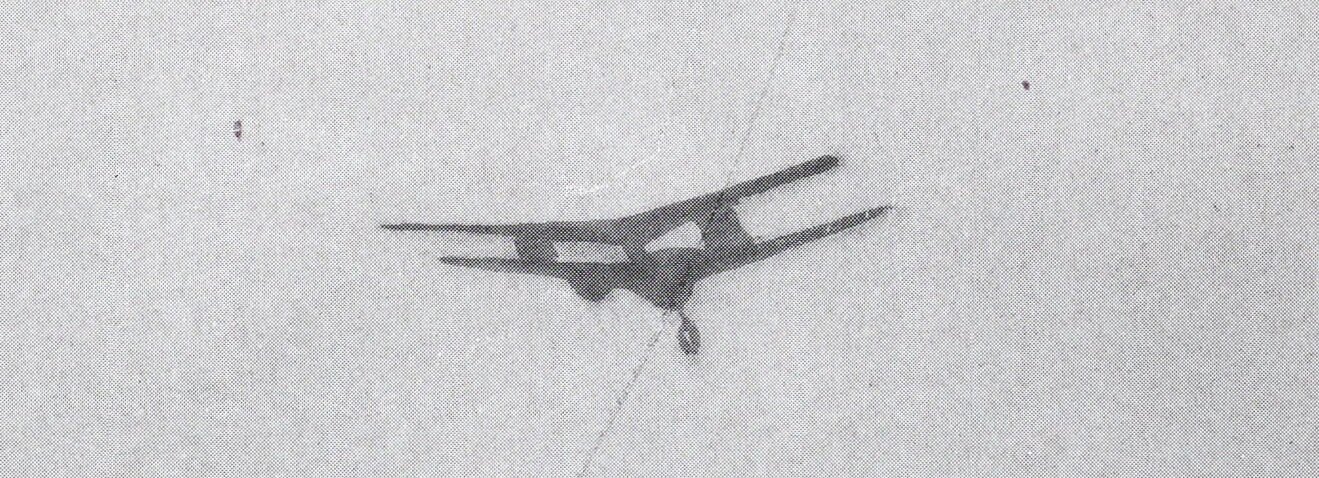Mechanical Flight

The winds blowing across the Potomac River the morning of May 6, 1896 were too high and erratic for Samuel Pierpont Langley and his team to safely launch his aerodromes from atop the specially designed houseboat anchored off Chopawamsic Island in Stafford, Virginia. By 1:00 pm, conditions had improved and Aerodrome No. 6 was readied for flight. At 1:10 pm the houseboat was oriented into the 6 to 10 mph northeast winds and on Langley’s command Edward Huffaker released the spring-actuated catapult. Once again, Langley’s craft convulsed before it was released from the launching carriage; a guy wire caught on the wooden support system sending Aerodrome #6 crashing into the river. The crash was observed by Langley’s friend, inventor Alexander Graham Bell, himself an aviation enthusiast and experimenter. When the extensively damaged aircraft was retrieved from the water it was clear that its day was done.
Undeterred, Langley directed the team to make preparations to launch Aerodrome No. 5. At 3:05 p.m. Langley, while observing from Chopawamsic Island, gave the command to launch. This time the release was clean and Aerodrome No. 5 shot down the launching track into a gentle breeze. Bell, stationed in a boat on the port side of the houseboat, captured an image of the aerodrome immediately after launch. After dropping a few feet the aerodrome’s nose pointed 10 degrees skyward and began a steady rise. Traversing a wide spiral path to the right, over the next 80 seconds the aerodrome reached an estimated height of 70 to 100 feet before the powerplant’s fuel was exhausted.
When the propellers stopped the craft continued its gentle spiral downward before lightly coming to rest in the river to the south of the houseboat. Once the flight path was plotted on the coast-survey chart its total distance was estimated to between 2,430 and 3,000 feet at a rate of 20 to 25 miles per hour with a total flight time of 1 minute 30 seconds.
The flight’s success astonished the observers, including Langley’s own team, who pondered what they had just witnessed. For the first time in human history a heavier-than-air craft had achieved and sustained powered flight. Frederick E. Fowle, Jr., a junior assistant at the Smithsonian Astrophysical Observatory, captured multiple images of Aerodrome No. 5’s historic flight, excerpts of which were included in the Langley Memoir of Mechanical Flight, the official Smithsonian report on Langley’s experiments.
“Instantaneous Photograph of the Aerodrome at the Moment After Launching in its Flight at Quantico on the Potomac River, May 6, 1896, Enlarged Ten Times,” Langley, S. P., and Charles M. Manly. Langley Memoir on Mechanical Flight. Published by the Smithsonian Institution, 1911. (Photo by Alexander Graham Bell)
“Instantaneous Photograph of the Aerodrome at a Distance in the Air During its Flight at Quantico on the Potomac River, May 6, 1896, Enlarged Ten Times,” Langley, S. P., and Charles M. Manly. Langley Memoir on Mechanical Flight. Published by the Smithsonian Institution, 1911. (Photo by Frederick E. Fowle)
Aerodrome No. 5 was recovered and prepared for a second test shortly after 5:00 pm. To correct the aerodrome’s clockwise yaw the team adjusted the wings by tightening the guy wires and at 5:10 pm launched the aerodrome to the south on account of changing wind directions. This time Aerodrome No. 5, circling to the left, reached a height of 60 feet and flew an estimated 2,300 feet before once again gently coming to rest in the water.
“Path of Aerodrome Flights, May 6 and November 28, 1896, Near Quantico, Va., on the Potomac River,” Langley, S. P., and Charles M. Manly. Langley Memoir on Mechanical Flight. Published by the Smithsonian Institution, 1911.
Alexander Graham Bell’s accounts of the momentous flights were shared widely in scientific publications around the world:
“Last Wednesday, May 6th, I witnessed a very remarkable experiment with Professor Langley’s aerodrome on the Potomac River. Indeed, it seemed to me that the experiment was of such historical importance that it should be made public. I am not at liberty to give an account of all the details, but the main facts I have Professor Langley’s consent for giving you, and they are as follows:
“The aerodrome, or ‘flying-machine,’ in question, was of steel, driven by a steam engine. It resembled an enormous bird, soaring in the air with extreme regularity in large curves, sweeping steadily upward in a spiral path, the spirals with a diameter of perhaps 100 yards, until it reached a height of about 100 feet in the air, at the end of a course of about half a mile, when the steam gave out, the propellors which had moved it stopped, and then, to my surprise, the whole, instead of tumbling down, settled as slowly and gracefully as it is possible for any bird to do, touching the water without any damage and was immediately picked out and was ready to be tried again.”
“No one could have witnessed these experiments without being convinced that the practicality of mechanical flight had been demonstrated.”
-Alexander Graham Bell, May 12, 1896
Alexander Graham Bell
Samuel Pierpont Langley, 1895, Smithsonian Institution Archives, Record Unit 95, Box 15, Folder 8
The summer of 1896 Langley vacationed in Europe with his family while his team repaired and modified the aerodromes to ready them for additional flight testing upon his return. On November 28, 1896, the team launched Aerodrome No. 6 from the same location on the Potomac River into a gentle southerly wind. This time the aerodrome’s flight took a flatter, wider curve to the right, traversing between 4,200 and 4,600 feet over one minute and 45 seconds at approximately 30 miles per hour.
In June 1897, Langley authored “The New Flying Machine,” which was published in The Strand Magazine, Volume 13. Langley celebrated his success and pondered the future of mechanical flight and his role in pursuing its commercial applications:
“And now, it may be asked, what has been done? This has been done: a “flying machine,” so long a type for ridicule, has really flown; it has demonstrated its practicability in the only satisfactory way-by actually flying, and by doing this again and again, under conditions that leave no doubt.
There is no room here to enter on the consideration of the construction of larger machines, or to offer the reasons for believing that they may be built to remain for days in the air or to travel at speeds higher than any with which we are familiar; neither is there room to enter on a consideration of their commercial value, or of those applications which will probably first come in the arts of war rather than those of peace; but we may at least see that these may be such as to change the whole conditions of warfare, where each of two opposing hosts will have its every movement known to the other, when no lines of fortification will keep out the foe, and when the difficulties of defending a country against an attacking enemy in the air will be such that we may hope that this will hasten rather than retard the coming of the day when war shall cease.
I have thus far had only a purely scientific interest in the result of these labours. Perhaps if it could have been foreseen at the outset how much labour there was to be, how much of life would be given to it, and how much care, I might have hesitated to enter upon it at all. And now reward must be looked for, if reward there be, in the knowledge that I have done the best I could in a difficult task, with results which it may be hoped will be useful to others. I have brought to a close the portion of the work which seemed to be specifically mine - the demonstration of the practicability of mechanical flight; and for the next stage, which is the commercial and practical development of the idea, it is probable that the world may look to others. The world, indeed, will be supine if it does not realize that a new possibility has come to it, and that the great universal highway overhead is now soon to be opened.”
His legacy secured, the 63-year old could have been content to bask in his achievement and “look onto others” to develop the commercial and practical development of human flight. However, Langley’s ill-fated pursuit of manned flight would result in personal disappointment, public ridicule and conflict that would continue long after his death.





